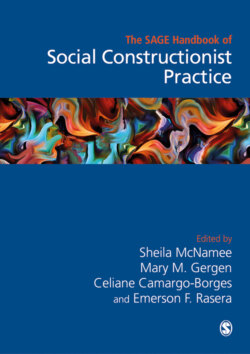Читать книгу The Sage Handbook of Social Constructionist Practice - Группа авторов - Страница 112
На сайте Литреса книга снята с продажи.
The Dialogues
ОглавлениеWe invite the students to start writing the document with the dialogues. We frequently described this part as a weaving process. There are at least three threads that the facilitator brings together when writing this part: the voices of the co-researchers, his/her inner dialogues, and the voice of other authors who have facilitated research on the subject. She/he begins responding to all the conversations as a whole and, at the same time, observing the patterns that emerged from them. The patterns serve as a guide for the traditionally called review of the literature.
As with any dialogue, on this process of ‘weaving’ there are moments of what Christian calls creation ‘… and if I think about the process, the process ended up feeling like creation’. At this, Rocio responds by saying, ‘There are three words that I have been listening to: one is a response, another is the process, and the other is creativity’. Cynthia jumps and shares, ‘I agree … since you do not develop a methodology with previously established steps, but you live a process of curiosity and inquiry around a particular topic, for me, creativity is required to integrate and/or present all the information that emerges from the conversations’.
Once the students feel they have finished with this part, and before starting writing anything else, they return this piece to all the co-researchers for their responses, critique, and eventual approval. If any changes are suggested, those are made and rechecked with the person who made the suggestions until everybody is satisfied with this section.
